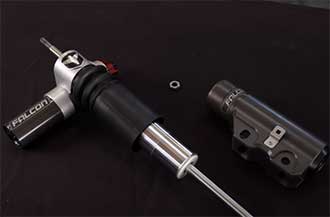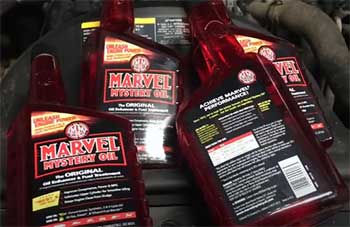If you’re a vanlifer or campervan owner looking to upgrade your vehicle’s suspension, you’ve probably come across two popular options: the Agile RIP kit and the Van Compass suspension. Both aim to improve ride quality and handling for vans like the Ford Transit, Mercedes Sprinter, and Ram ProMaster.
But with different designs and features, it can be tricky to choose between the two.
In this comprehensive guide, we’ll break down the key pros and cons of Agile RIP kits and Van Compass suspension to help you decide which is best for your needs and budget. We’ll look at factors like:
- Ride quality
- Load handling
- Ease of installation
- Customization options
- Cost
- Warranty and customer service
Whether you’re hitting the trails or keeping to the pavement, a smoother ride and better handling can make all the difference in comfort and control.
Let’s take a closer look at how Agile and Van Compass get you there!
A Brief Comparison Table
| Aspects | Agile RIP Kit | Van Compass Air Suspension |
| Ride Quality | Firmer but smoother than stock | More adjustable, plush ride when aired down |
| Load Capacity | 700-1000 lbs increase | Helps distribute but doesn’t increase max load |
| Installation | Easier overall, no spring compression | Slightly less labor intensive |
| Off-Road Ability | Better articulation and puncture resistance | Increased clearance when aired up |
| Cost | $2800-$4000 plus $1000+ install | $2500-$3500 plus $400-600 install |
| Warranty | 5 years – leads the industry | 2 years on components |
| Customization | Fixed spring and damping rates | Adjustable ride height and damping |
Agile RIP Kit Overview

The RIP kit from Agile Offroad is one of the most popular suspension upgrades for vanlifers.
The “RIP” stands for Replace Improve Protect – the kit aims to completely replace your van’s factory suspension with heavier duty components.
The main goals of the Agile RIP kit are to:
- Improve ride quality by reducing vibration and harshness
- Increase load capacity and stability when carrying gear or cargo
- Protect components from bottoming out over rough terrain
The Agile kit includes front and rear shock absorbers, custom springs, and depending on the model, adjustable track bar and sway bar components.
The shocks use a high pressure monotube design for performance damping and the springs are longer and stiffer than stock.
Agile RIP Kit Pros
- Greatly Improves Ride Comfort: With its upgraded shocks and progressive rate coil springs, the Agile system absorbs so much more vibration and impact than worn factory suspension. You get a smooth, cushioned ride over all types of road surfaces.
- Increased Load Capacity: The RIP kit is rated to handle 700-1000 more pounds of gear and cargo weight. The stiff springs and robust shocks prevent bottoming out.
- Better Handling and Control: With reduced body roll and dive under braking, the RIP kit provides flatter, more stable handling for easier driving. The adjustable track bar and sway bar further reduce sway.
- Easier Installation: Agile uses factory suspension mounts for a direct bolt-on install. No cutting or welding required. All parts and instructions included.
- Works Great Off-Road: With its ability to flex and soak up bigger impacts, the RIP suspension tackles rough dirt roads, washboard, and rutted trails with ease.
- 5 Year Warranty: Agile provides one of the longest suspensions warranties on the market. This shows the kit’s quality and durability.
Agile RIP Kit Cons
- Costs More Upfront: Priced at $2800-$4000, the Agile RIP kit costs significantly more than stock replacement components. But supporters say the ride benefits are worth the investment.
- Stiffer Feel: The firmer shocks and springs transmit more road impacts into the cabin compared to softer factory suspension. Not ideal for those wanting a Cadillac ride.
- Lower Ground Clearance: Depending on the van model, the Agile kit can reduce ground clearance. Not a major issue for street use but something to consider for overlanding.
- No Adjustability: The RIP kit options don’t allow ride height or damping tuning like some higher-end suspension systems. You get a fixed setup.
- Weight: The steel springs and shock components add around 100 lbs overall to your van’s weight. A consideration if aiming to maximize MPG.
Van Compass Suspension Overview
The Van Compass air suspension takes a high-tech approach to improving ride and handling. Instead of springs, load-bearing airbags allow you to manually adjust your ride height. Low pressure in the bags provides a soft highway ride while higher pressure levels off the van for loading.
Key benefits of the Van Compass air suspension system:
- On-the-fly ride height adjustment
- Better weight distribution with more airbags
- Overall smoother, more adjustable ride
- Increased ground clearance when needed
The complete Van Compass kit uses four to six controllable air bags along with supporting brackets and air lines. The system pairs with your existing shocks or can upgrade to higher performance shocks.
Van Compass Pros

- Adjustable Ride Height: With the ability to add or release air, you can tailor clearance and ride firmness to conditions – no fixed spring rates. Lower for highway, raise for off-road.
- Improved Weight Distribution: Additional airbags evenly support vehicle weight compared to just front and rear springs. Reduces sag under heavy loads.
- Softer Ride: Even at higher pressures, airbags have more give than stiff coils. Most owners report Van Compass delivers a supple ride.
- Higher Ground Clearance: When raised up, airbags increase clearance more than lowered coil springs. Helpful for overlanding and clearing obstacles.
- No Harsh Bottoming Out: Airbags compress gradually rather than springs hitting jarring stops. Gives a more cushioned ride over impacts.
- More Tuning Options: Van Compass offers adjustable damping shocks to fine tune ride firmness. Coil kits provide fixed damping.
- Lower Installation Costs: More DIY friendly as airbags bolt up to existing mounts. Very little cutting required. Labor runs $600-$800 less than complex coil installs.
Van Compass Cons
- Pricing: A complete Van Compass air kit runs $2500-$3500. More than stock but similar upfront cost as Agile coils. Doesn’t include install labor.
- Leak and Failure Risks: Airbags can develop leaks or fail with age and use. Coil springs are more set-it-and-forget-it. Air demands close monitoring.
- Power Draw: The compressor and air management system draws up to 15-amps. Important to have robust electrical system. Hardwires to battery recommended.
- No Increase to Load Capacity: While airbags help evenly distribute weight, most kits don’t substantially increase overall load ability like coils.
- Mixed Off-Road Performance: Susceptible to punctures from rocks/debris. Some report coils flex better on trails. But clearance a key advantage.
- Learning Curve: Getting the right air pressure dialed for conditions takes time and practice. More adjustment factors than set coils.
Direct Comparison of Pros and Cons
Now that we’ve looked at the overall benefits and downsides of Agile RIP kits and Van Compass air suspension, let’s directly compare their key strengths and weaknesses:
- Ride Comfort and Road Handling
The Agile coil system generally provides a firmer but smoother ride than worn factory suspension. Van Compass air can deliver a plusher, more adjustable ride when pressures are set low. Both improve handling, but airbags have a comfort advantage.
Winner: Van Compass
- Load Capacity
With its stiff coil springs, Agile clearly has the edge for increasing overall load capacity or gear weight. Van Compass helps distribute weight but doesn’t improve total max loads as substantially.
Winner: Agile
- Off-Road Ability
For serious overlanding, Agile’s increased suspension articulation and puncture resistance gives it an advantage off-road. But Van Compass offers greater ground clearance when aired up. Overall a split decision.
Winner: Tie
- Installation and Tuning

Airbags involve slightly less intensive installation without needing to compress springs.
But coils are a simpler install overall.
Coils also don’t require fine tuning air pressures like Van Compass.
Winner: Agile
- Costs
Upfront purchase price is similar between kits but professional install runs $600+ less for Van Compass since no spring compression tools needed.
Ongoing costs, Van Compass requires replacing airbags over time.
Winner: Van Compass
- Warranty
Agile provides an industry leading 5 year warranty on its coil suspension components. Van Compass just 2 years for parts replacement. For long term ownership, Agile is safer.
Winner: Agile
So in summary, Agile RIP kits edge out Van Compass in load capacity, installation, and warranty support. But Van Compass takes the lead in two key areas for many users: overall ride comfort and cost. Both upgrade your factory suspension substantially.
Also Read: Is Rancho Quick Lift Better Than Bilstein 5100 Suspension?
Recommendations
Based on this comprehensive comparison, here are my recommendations:
For Vandwellers and Daily Drivers – the comfort, adjustability and lower cost of Van Compass air suspension makes the most sense if ride quality is your top priority. Just take the time to properly install and dial-in the system.
For Overlanders and Gear Haulers – the increased load capacity, simpler install, and ruggedness of the Agile RIP kit is hard to beat if you plan to carry heavy loads off-road. Expect a firmer but smoother ride than stock.
Whichever system you choose, inspecting and replacing any worn factory shocks and bushings is a must. This ensures you get the full benefits of the new springs and damping. With proper maintenance, both Agile and Van Compass deliver a big upgrade in ride, handling, and even ground clearance. Your back and passengers will thank you!
Final Thoughts
Hopefully this detailed comparison gives you the information needed to decide which suspension design fits your van, budget and driving needs the best. Both companies offer additional shock and steering upgrades too.
So don’t settle for worn out factory components. Get out there and start enjoying the smoother, more stable ride you deserve!

